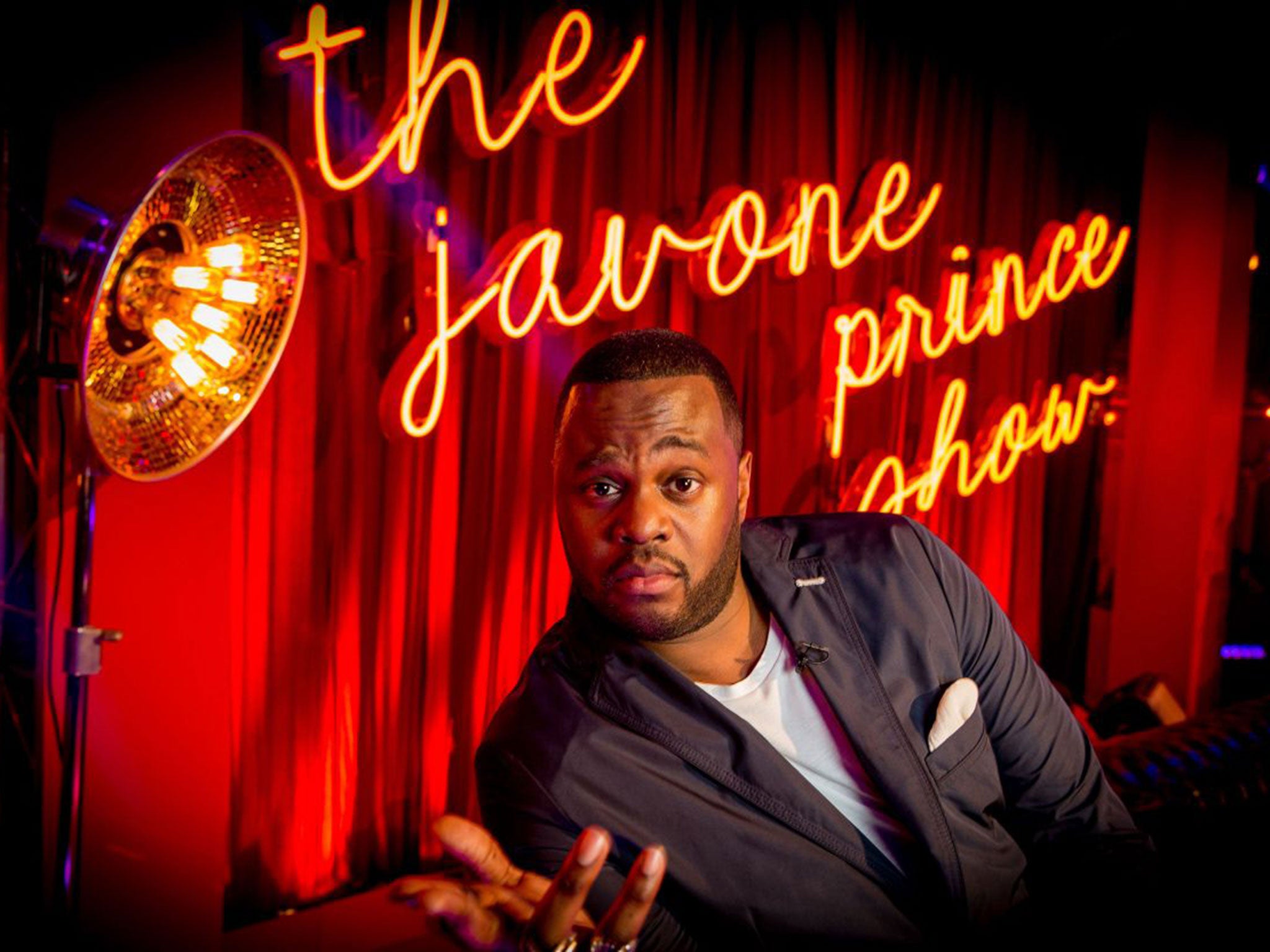The Javone Prince Show, TV review - A racially astute comedy show from a young talent who deserves to be a star
The sketches were mostly observational nuggets, and many of them could only have been made in Britain

Your support helps us to tell the story
From reproductive rights to climate change to Big Tech, The Independent is on the ground when the story is developing. Whether it's investigating the financials of Elon Musk's pro-Trump PAC or producing our latest documentary, 'The A Word', which shines a light on the American women fighting for reproductive rights, we know how important it is to parse out the facts from the messaging.
At such a critical moment in US history, we need reporters on the ground. Your donation allows us to keep sending journalists to speak to both sides of the story.
The Independent is trusted by Americans across the entire political spectrum. And unlike many other quality news outlets, we choose not to lock Americans out of our reporting and analysis with paywalls. We believe quality journalism should be available to everyone, paid for by those who can afford it.
Your support makes all the difference.The UK has fallen behind the US when it comes to racially astute sketch comedy. Over there, they’ve got Key & Peele (the origin of Luther, President Obama’s fictional ‘anger translator’, who popped up during this year’s White House Correspondents Dinner) and more recently Why? With Hannibal Buress. Over here, we once had The Real McCoy (1991-96) and Goodness Gracious Me (1998-2001), but there’s been little in recent years, until last night’s debut of The Javone Prince Show.
Prince is currently best known to comedy fans as one half of the slick salesman double act Jerwayne and Ashley on Channel 4’s cult sitcom PhoneShop. Since PhoneShop’s third series, Ashley aka Andrew Brooke has had a role in Channel 4’s Babylon, but the channel evidently passed on Prince’s sketch show, leaving it up to the BBC to support this young talent. Can this new six-part sketch show turn him into the household name he deserves to be?
In keeping with the Inside Amy Schumer trend, this wasn’t a straightforward sketch show, but rather a collection of sketches framed by a variety show set-up, filmed in front of a live audience. Prince approached the stage to loud cheers, then berated his announcer (a white guy with an embarrassing fondness for Jamaican “jive talk”) and attempted matey banter with British soul act Omar, the stoney-faced leader of his house band.
Prince has no shortage of either energy or charisma, but it wasn’t quite enough to prevent the show from flagging during a performance from Mica Paris. I wouldn’t be surprised if the musical interludes were ditched in any subsequent series.
It’s the sketches themselves that are the show’s strength. These were mostly observational nuggets, unashamedly aimed at a young-ish metropolitan audience, and many of them could only have been made in Britain. The first set the tone nicely with a riff on police stop-and-search techniques, reimagined as a classic BBC period drama. Another was the reality TV and Sloane-life spoof “Made in Peckham”, while a third poked fun at rip-off releases from “1000 per cent” rubbish grime MCs.
Television may only just be cottoning on to the fact, but black people have been living and working in this country for hundreds of years. That was just one of the intriguing details of 17th-century life brought artfully to the fore by the slo-mo, black-and-white and heavily soundtracked stylings-of-archeology documentary, London’s Lost Graveyard: the Crossrail Discovery.
In a city of our capital’s size and age, we’re always walking on the graves of our ancestors, but it’s amazing what was revealed when these bones were dug up from the recently uncovered Bethlem Burial Ground in Liverpool Street last year.
One Museum of London archaeologist theorised that a worn big toe bone indicated repetitive strain injury from continuously operating a foot pedal as some kind of craftsman and Dr Matthew Green was the authority on the 17th-century vice trade. He revealed that sex workers of the period were variously known as “roses” (hence the name of former red-light district Rose Alley in Bishopsgate) or “geese”, which brought us to the fate of poor, unfortunate, syphilitic John Price: “He came looking for geese and he was bitten by a goose,” was Dr Green’s solemn conclusion.
Join our commenting forum
Join thought-provoking conversations, follow other Independent readers and see their replies
Comments